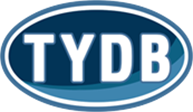- The Bay supports the world’s largest freshwater port system, approximately 3,000 vessels a year, and is the largest receiving center for crude oil, steel, paper, and meat imports.
- Fort Delaware is on the National Register of Historic Places. The Union fortress dates back to 1859, and once served as a prison for Confederate prisoners of war. It was originally built to protect the ports of Wilmington and Philadelphia.
- Approximately 70 percent of the oil shipped to the East Coast of the United States passes through the Delaware Bay, making it the second-largest refining petrochemical center in the nation.
- In 2002, Pea Patch Island Nature Preserve, which is home to the largest colony of nesting herons on the East Coast (north of Florida) was dedicated as a Continentally Important Bird Area by the National Audubon Society, supporting the area’s consideration as a wildlife resource of both local and national significance.
- The Port of Wilmington alone is an economic engine responsible for over 16,000 jobs, $337 million in business revenue impact, and $31 million in annual State and local taxes and is the number one port in North America for the imports of fresh fruit and specifically, bananas.
- World’s largest population of horseshoe crabs spawn in Delaware Bay
- The Delaware Bay is one of the four most important shorebird migration sites in the world, and it boasts the second-highest concentration of shorebirds in North America. The Bay also provides wintering and migratory habitat to many species of songbirds, waterfowl and raptors.
- The Delaware Bay Estuary was designated as a Ramsar site and wetland of international significance in May of 1992 because the wetlands associated with this estuary provide a critical resting and feeding area for migratory shore and wading birds.
Source of Bay Facts:
National Oceanic and Atmospheric Administration (NOAA) www.noaa.gov
U.S. Environmental Protection Agency (EPA) www.epa.gov
Delaware Department of Natural Resources & Environmental Control www.dnrec.delaware.gov
Partnership for the Delaware Estuary www.delawareestuary.org
The Nature Conservancy www.nature.org
The Port of Wilmington www.portofwilmington.com
